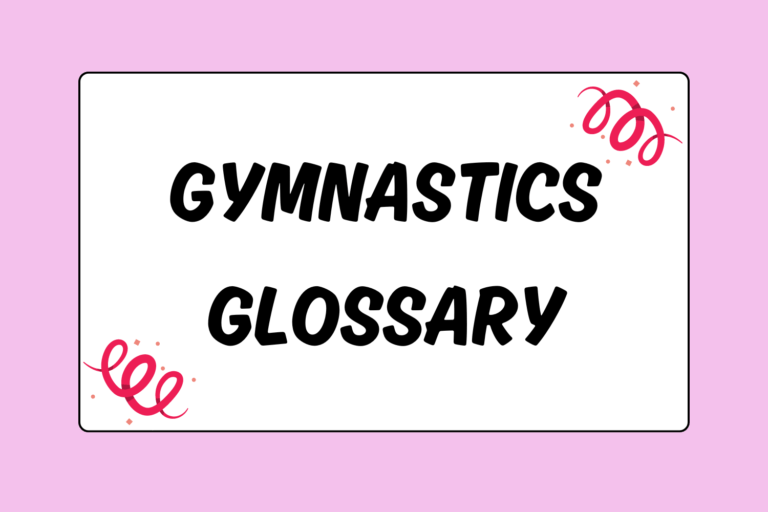The balance beam is a women’s only event in artistic gymnastics. It is a popular event that is sure to raise the blood pressure of all who watch it being performed, as girls execute multiple spins, flips and leaps across a four inch wide apparatus. Although often a favorite for gymnastics fans, the beam it is not necessarily a favorite among gymnasts—it is difficult to perform such complex skills on such a narrow piece of equipment, where even the slightest bobble can take you out of medal contention.
To better understand how to approach the balance beam, it is important to know its history, the rules and regulations of the event, as well as the specific elements that make up a successful routine.
Here is the ins-and-outs of the balance beam:
History
The first mention of a balance beam-like skill was in the book, Gymnastics for the Youth, by Johan Christoph GutsMuths in the early 1800’s. GutsMuths dedicated one chapter of his book to maintaining balance on a horizontal round pine tree log.
By the 1830’s, gymnasts used either a fir or pine tree as a balance beam. The apparatus was no longer circular in shape, but cut 10-inches wide by approximately 40-feet long and placed between two posts. In a matter of decades, the balance beam was used around the world.
However, it did not become a part of competitive gymnastics until 1934, when Hungarian gymnast Gabi Muzaros performed the splits across the 8cm wide apparatus at the World Championships in Budapest. The skill was received with such awe, that the beam instantly became a stable in international gymnastics routines.
As tumbling skills progressed, the balance beam itself changed too. The beam was widened from 8cm to 10cm, the edges were rounded, and in 1974, soft suede padding was added to the apparatus. The padding provided a safe foot stand on the beam as well as a softer landing for difficult tumbling elements such as flips and handsprings.
Dimensions
Today, the balance beam used in competition must conform to certain standards. The International Federation of Gymnastics (FIG) requires that each beam is supported by an elastic overlay with a cushioning that is between 15mm and 30mm thick. The ends of the five-meter long beam must have rounded edges and the beam itself is required to stand 1.2m off the ground. In addition the beam must have a landing mat at the end that measures 17m by 4m.
Fun Fact:
When learning difficult tumbling passes, gymnasts often use a beam that is thicker and lower than competitive standards. Generally, such beams are only six inches off the ground and have up to one-half inch of padding on the surface. This difference gives gymnasts an added bit of confidence to attempt new, difficult maneuvers.
Routine Requirements
Certain elements are required within a competitive balance beam routine. Each routine needs to last at least 60-seconds, but cannot exceed more than 90-seconds. A gymnast must use the entire length of the beam and perform multiple acrobatic elements.
In lower level competitions (competitive levels 4-7), routines are predesigned and every gymnast must compete the same series of skills. At the elite level, gymnasts get to choose their own routine, but must still include a sequence of required elements.
Here are some of those skills:
- Acrobatic or gymnastics series: This can include elements such as a back handspring followed by a back salto (flip), or a turn followed by a leap.
- 360-degree turn: The gymnast must complete a 360-degree turn on one foot.
- 180-degree forward split: This element is completed during a jump or leap.
Each element is ranked in difficulty from “A” easiest (back walkover) to “E” hardest (back full). Gymnasts may add more challenging skills to their routine or link difficult elements together to increase their chances for a high score.
Judge Evaluation
Judges evaluate the entire beam routine, from the moment the gymnast salutes until the moment her feet land in the dismount. Judges want to see poise and grace combined with balance, coordination and skill. Good body posture and tight form are also highly valued.
Judges keep track of the required elements and deduct points if those elements are not present. If a gymnast falls from the beam, it is an automatic one point deduction. If more difficult elements are combined together in a series, judges will award points accordingly – as long as the execution of the tricks is done well.
The last (and very important) element a judge is looking for is a stuck landing. After the dismount, which should include multiple flips and twists in order to score high, the feet must stay firmly planted on the ground. If there is any bobble, or any movement of the feet, the judges will deduct points.
How to Improve Your Beam Skills
One of the best ways you can improve on the balance beam is through the development of core strength and body awareness. Strong stomach, back and hip muscles will help you keep tight form, maintain balance, and control difficult movements, including sticking the landing.
To work on your body’s strength and awareness, try implementing these exercises into your daily routine:
- Hanging pike-ups: Hang on a bar with your feet dangling below. With control, lift your legs up in a pike position toward your head. Slowly release them—do not let them swing on the bottom. Lift them back to your head at least five more times.
- Spins/tricks on straight line: Practice your balance beam routine on the floor, using either a piece of tape or a chalked straight line. Maintain your balance and perform the tricks while staying on the line.
Trial & Error
The balance beam is an exciting event. It has elements of grace, beauty, explosive acrobatics and incredible strength. The best balance beam gymnasts attack the beam as they would the floor exercise: using speed and control to incorporate multiple flips and twists into a solid routine.
Years of practice, combined with fearless attempts of trial and error, are necessary before you can truly master this event. But with time and desire, you too can learn to love the balance beam.





